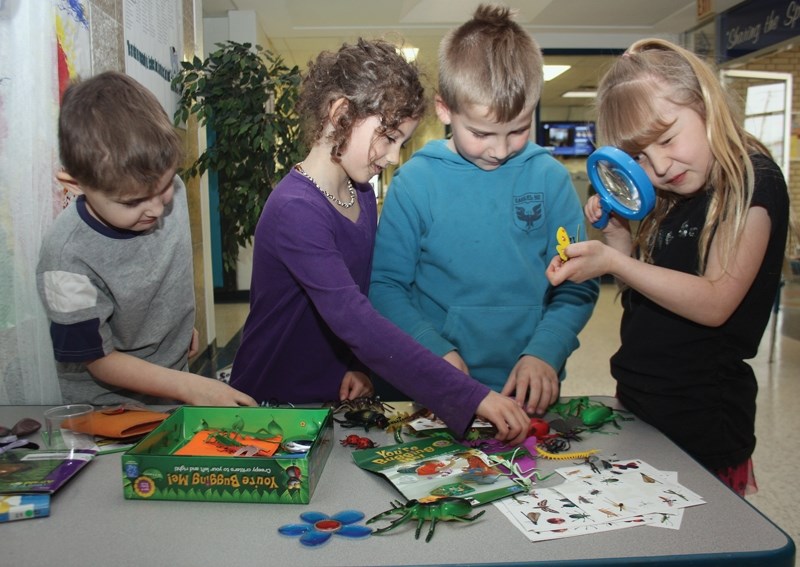The shelves of St. Mary School’s libraries are now nearly empty as the school moves toward a different educational philosophy including a pre-kindergarten program and more online research.
That’s not to say there will be no books and no librarians, it just means those services will look different in coming years.
The reasoning behind this is twofold, principal Sheila Glebe said. First of all, the physical library space will be used for a new kindergarten space, but there’s also a philosophical shift that’s taking place within the Evergreen Catholic Separate Regional Division.
“We’re doing this as a division,” she said. “We’re having the librarians meet to discuss what is the future of a librarian and what is the future of a librarian’s job.”
Librarians will take on more of an active role within classrooms, serving as more of a technology expert and research assistant.
“You might have a junior-high group where the librarian is an expert at teaching them to discern what is meaningful information from the Internet and what is not, and learning how to read, how to synthesize, how to glean information from a variety of sources, and then perhaps to become an expert in presentation tools,” she said.
The shift at ECSRD runs parallel to a shift that’s taking place across the province, with Alberta Education moving away from traditional teaching methods in favour of a discovery-based approach.
Specifically at St. Mary, Glebe said they’re looking to introduce the Reggio Emilia philosophy, which focuses on student-directed exploratory learning.
A consultant working in the school recently provided an example of this. A student wondered if it would be possible to travel to the North Pole, and so as a group the class set out to answer that question.
“It started from the student interest then got into all kinds of math figuring out the dogs and the dogsleds, and learning about climate, learning about the animals that were up there,” Glebe said.
“Instead of a teacher saying this is what we’re doing, the teacher tends to respond to what the students are saying.”
The disappearance of the physical library space doesn’t mean students will no longer have access to books and research material — in fact quite the opposite.
The school is awaiting delivery of touch-screen pad devices that will give students access to the more current, Internet-based research materials that are rapidly taking the place of traditional research books.
Books can become outdated very quickly in a world where up-to-date information can just be an Internet search away.
“What we’re finding is that particularly in the case of research books, children aren’t using them,” Glebe said.
“They are going to the Internet, and of course embedded right in the curriculum is teaching them how to discern information on the Internet because that’s a huge issue, I think.”
Librarians will be there not to help students find books on a shelf, but rather to help students differentiate reliable sources of information from the many unreliable sources of information out there.
But while research opportunities abound online, Glebe knows there’s no substitution for sitting down with a good paper storybook or novel.
To that end, the school will have reading “pods” set up throughout the school, geared toward specific age groups, and teachers are working to make classroom spaces more inviting in that context as well.
One such pod is already set up outside the physical library space, and it includes a variety of books about insects as well as some models with magnifying glasses where students can get some hands-on experience with the subject matter.
“If you set up a space that’s inviting to children, that provides them a variety of opportunities and a choice, then their imaginations are ignited” she said.
“Whereas if we put them in little square boxes, I think we tend to squash their imaginations.”
As of last week, the pre-kindergarten program at St. Mary has full board approval and enough buy-in from parents that it’s definitely going to be implemented for the 2014-15 school year.
Interested parents will have to shoulder some of the cost, however.
“Pre-kindergarten is not supported by the provincial government, so there is a fee associated with it,” Glebe said. “It will be $150 a month, and it’s three half-days, from nine to 12.”
This program will not be associated with the Westlock Preschool Society, which currently rents a classroom in the school to provide playschool for three-year-olds and a preschool program for four-year-olds.
“They do an excellent job here with the playschool; I’m really impressed,” Glebe said.
“The pre-k is a little bit different, though. It allows parents from our school to ensure they have a program all the way through from pre-k to Grade 12.”



